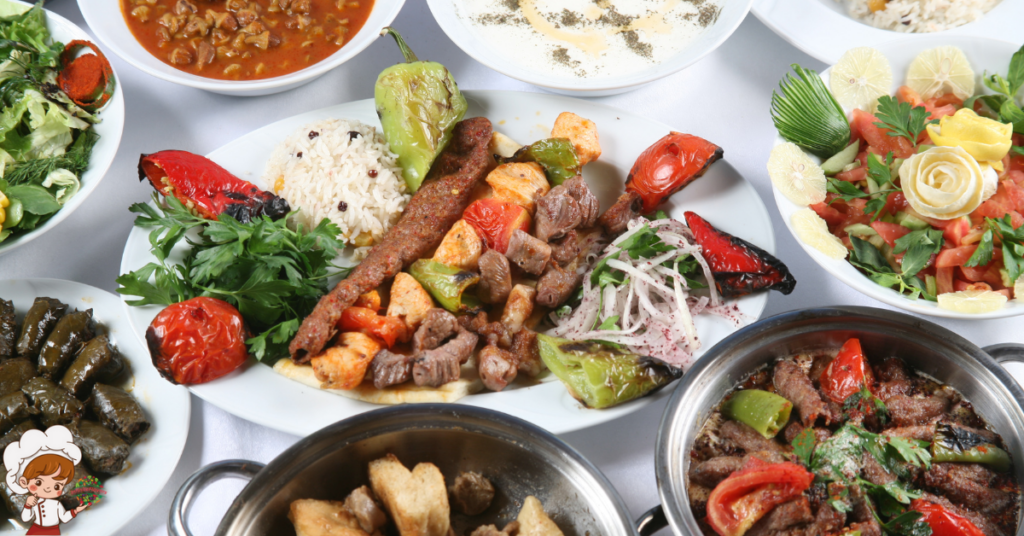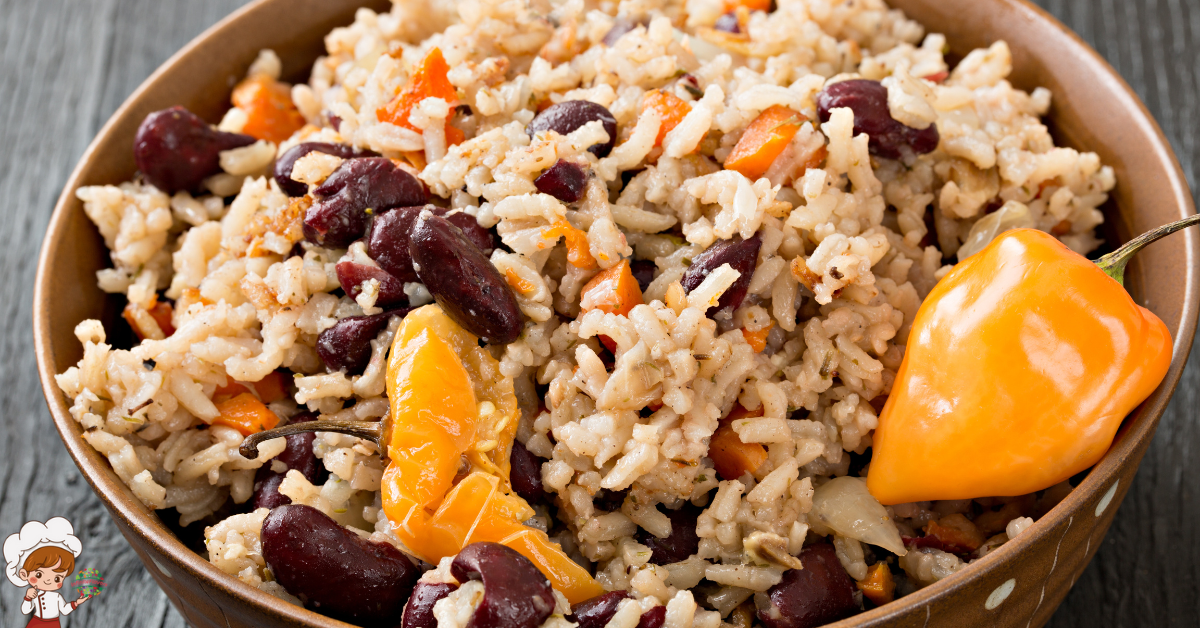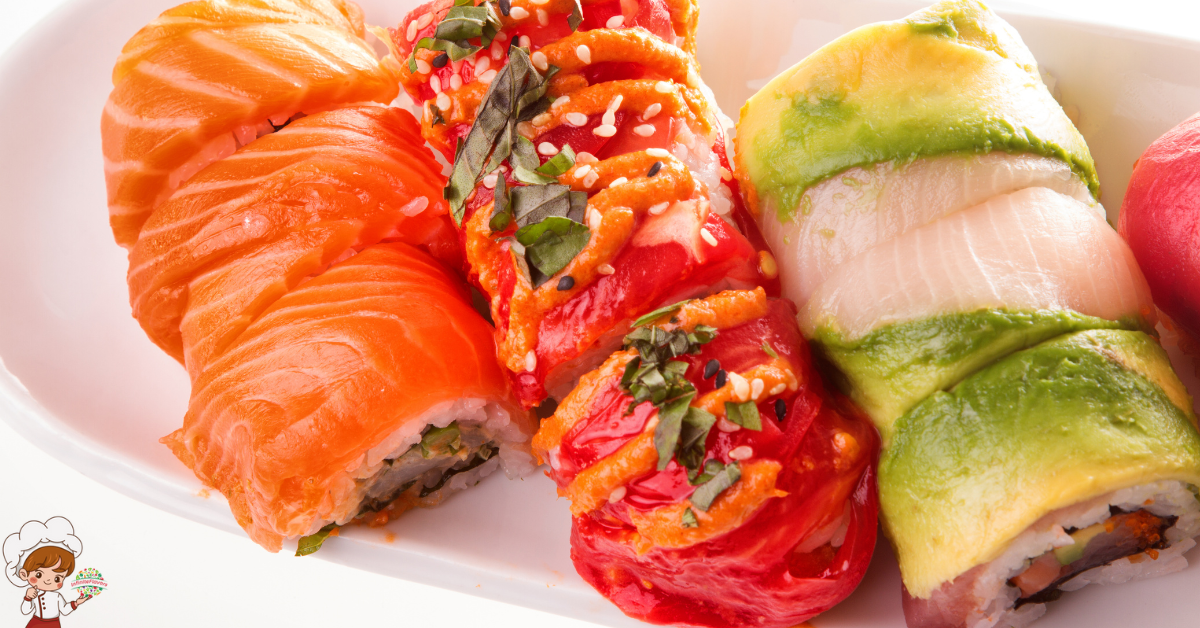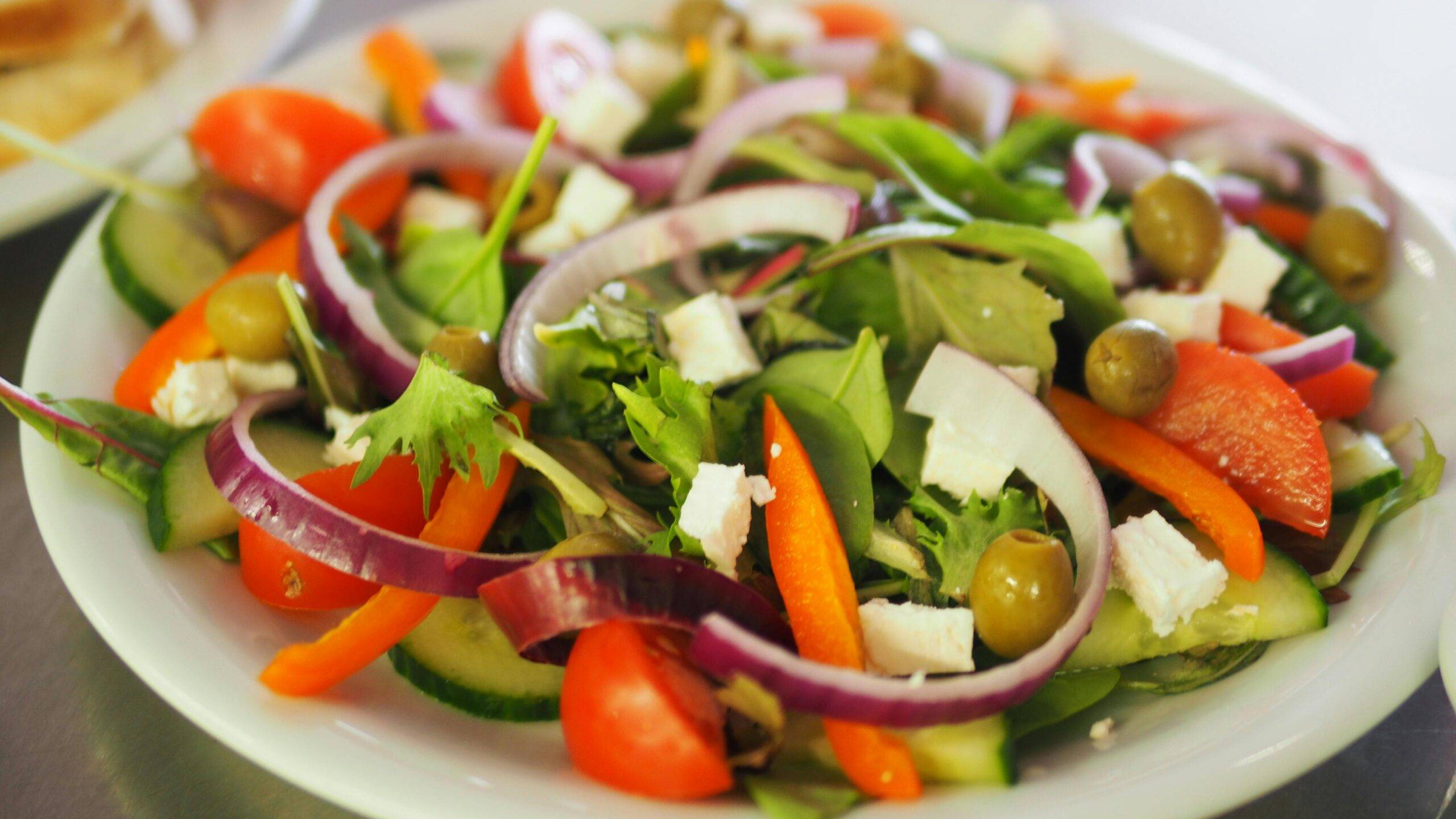Turkish Dishes With A Focus On Seasonal Produce

Turkish Dishes With A Focus On Seasonal; Are you ready to embark on a culinary journey that celebrates the vibrant flavors of Turkish cuisine, all while embracing the abundance of seasonal produce? Step into a world where the freshest ingredients take center stage, where each dish is a harmonious blend of tradition and innovation.
From the delicate and refreshing flavors of spring, to the cooling sensations of summer, the hearty warmth of autumn, and the comforting embrace of winter, Turkish cuisine offers an array of dishes that showcase the very best of each season. But the journey doesn’t stop there – discover the coastal delicacies that marry the bounty of the sea with seasonal ingredients, explore the world of vegetarian and vegan Turkish dishes that highlight the versatility of produce, and learn the techniques that preserve the essence of each season. And of course, let’s not forget the sweet finale – indulge in delectable desserts inspired by the luscious fruits of Turkey.
So, join us as we embark on this tantalizing adventure, where Turkish dishes and seasonal produce collide in a symphony of flavors that will leave you craving for more.
Turkish Cuisine: A Celebration of Seasonal Produce
Get ready to tantalize your taste buds with the vibrant flavors of Turkish cuisine, a culinary tradition that embraces and celebrates the bountiful offerings of each season. Turkish cuisine has a strong emphasis on using fresh, seasonal produce, following a farm-to-table approach that ensures the highest quality ingredients in every dish.
The concept of using fresh, seasonal produce is deeply ingrained in Turkish culture. Turkish people believe that using ingredients when they are at their peak ensures the best flavors and nutritional value. This approach not only enhances the taste of the dishes but also supports local farmers and promotes sustainability.
One of the key aspects of Turkish cuisine is its use of a wide variety of fruits and vegetables. From juicy tomatoes and crisp cucumbers in the summer to hearty root vegetables and leafy greens in the winter, Turkish dishes are a true celebration of the seasons. The use of fresh herbs, such as mint, parsley, and dill, adds a burst of flavor to many dishes, making them even more enticing.
In Turkey, farmers’ markets play a vital role in connecting people with fresh, seasonal produce. These markets, known as “pazar,” offer a vibrant and colorful array of fruits, vegetables, and other local products. The lively atmosphere of the markets, filled with the aromas of spices and the chatter of vendors, adds to the overall experience of enjoying Turkish cuisine.
Whether it’s a refreshing salad made with juicy summer tomatoes or a comforting stew filled with winter vegetables, Turkish cuisine allows you to savor the flavors of each season. So, next time you have the opportunity, don’t miss the chance to indulge in the delicious and wholesome dishes that Turkish cuisine has to offer.
Spring Delights: Turkish Dishes With Fresh Ingredients
Spring brings a burst of freshness to Turkish cuisine, as vibrant, seasonal ingredients are transformed into delightful dishes that capture the essence of the season. As the weather warms up and nature begins to bloom, Turkish cooks turn to a variety of spring recipes that showcase the abundance of fresh produce available. Whether you’re a fan of light and refreshing salads or crave heartier meals infused with the flavors of spring, Turkish cuisine has something to offer.
One of the most popular spring dishes in Turkey is the classic Yaprak Sarma, or stuffed grape leaves. Tender young grape leaves are filled with a mixture of rice, herbs, and spices, creating bite-sized parcels bursting with flavor. Another favorite is the refreshing Çoban Salatası, or Shepherd’s Salad. Made with ripe tomatoes, crisp cucumbers, tangy onions, and vibrant herbs, this salad is a celebration of the season’s bounty.
If you’re looking for fresh ingredient ideas to incorporate into your spring cooking, consider using artichokes. Turkey is renowned for its artichoke dishes, with recipes ranging from stuffed artichokes to artichoke pilaf. Asparagus is also a beloved ingredient during this time of year, and you can find it in dishes such as Asparagus Pide, a delicious Turkish flatbread topped with fresh asparagus, cheese, and herbs.
To satisfy your sweet tooth, try making a traditional Turkish dessert called Güllaç. This delicate dessert consists of layers of paper-thin pastry sheets soaked in a fragrant rosewater syrup and filled with crushed walnuts and pistachios. It’s the perfect way to end a springtime feast.
Spring is a time of renewal, and Turkish cuisine embraces the changing seasons by incorporating fresh, seasonal ingredients into its dishes. From light and refreshing salads to hearty meals bursting with flavor, there are plenty of spring delights to explore in Turkish cooking. So, grab your apron and get ready to create some delicious dishes using the vibrant produce of the season.
Summer Sensations: Cooling Turkish Recipes for Hot Days
Are you looking for refreshing dishes to beat the summer heat? Look no further than Turkish cuisine. Indulge in yogurt-based dishes like cacık, a cool and creamy cucumber and yogurt salad, or ayran, a refreshing yogurt drink. Experience the vibrant flavors of citrus fruits and zesty salads that will awaken your taste buds. And don’t forget to try chilled soups and gazpachos for a satisfying and cooling meal on those hot summer days.
Refreshing Yogurt-Based Dishes
Indulge in the delightful array of refreshing yogurt-based dishes, perfect for beating the summer heat and tantalizing your taste buds with their creamy goodness. Turkish cuisine offers a wide range of yogurt-based drinks and desserts that are not only delicious but also provide a cooling effect during hot days. One popular yogurt-based drink is Ayran, a refreshing blend of yogurt, water, and a pinch of salt. It is a light and tangy beverage that helps quench your thirst and replenish electrolytes.
For those with a sweet tooth, there are yogurt-based desserts like Cacık, a chilled yogurt and cucumber soup, or Şekerpare, a sweet pastry soaked in a honey syrup and served with a dollop of creamy yogurt. These yogurt-based dishes are not only a treat for your taste buds but also a perfect way to stay cool and refreshed during the scorching summer days.
Citrus Flavors and Zesty Salads
Immerse yourself in the vibrant flavors of Turkish cuisine with its refreshing citrus-infused dishes and zesty salads, perfect for keeping you cool on those hot summer days. Here are three mouthwatering options to try:
- Citrus Infused Main Courses: Turkish cuisine often incorporates the bright and tangy flavors of citrus fruits like lemons and oranges into their main dishes. From succulent grilled chicken marinated in lemon juice and olive oil to tender fish fillets drizzled with a zesty orange glaze, these citrus-infused main courses add a refreshing twist to your summer meals.
- Zesty Dressings for Turkish Salads: Turkish salads are known for their fresh and vibrant flavors. Add a zesty kick to your salads by tossing them with a tangy dressing made with citrus juice, olive oil, garlic, and herbs. The citrus flavors beautifully complement the crisp vegetables, creating a refreshing and satisfying salad experience.
- Cooling Summer Sides: Alongside your main courses and salads, Turkish cuisine offers cooling summer sides that feature citrus flavors. Think refreshing cucumber and mint yogurt dip, citrus-infused tabbouleh with bulgur wheat, and tangy tomato and pomegranate salad. These sides not only provide a burst of flavor but also help beat the summer heat.
Indulge in the citrus-infused main courses and zesty dressings for Turkish salads, and let the vibrant flavors transport you to the refreshing world of Turkish cuisine.
Chilled Soups and Gazpachos
Take your taste buds on a refreshing journey as we explore the realm of chilled soups and gazpachos, the perfect summer sensations in Turkish cuisine. Chilled soups are a delightful way to beat the heat and enjoy the abundance of fresh produce during the hot summer months. Gazpacho, a cold tomato-based soup, is a popular choice in Turkish cuisine.
Made with ripe tomatoes, cucumbers, bell peppers, and other herbs and spices, gazpacho is a light and refreshing dish that is bursting with flavor. There are countless variations of gazpacho recipes, allowing you to get creative and experiment with different ingredients. Whether you prefer a classic gazpacho or a unique twist, chilled soups and gazpachos are sure to cool you down and satisfy your cravings on a hot summer day.
Autumn Harvest: Flavorsome Turkish Dishes With Fall Produce
Get ready to savor the bountiful flavors of autumn with Turkish dishes using fall produce. From a vibrant seasonal vegetable medley to dishes bursting with rich autumn flavors, Turkish cuisine offers a delightful array of options to celebrate the harvest season. Whether it’s roasted pumpkin, earthy mushrooms, or sweet pomegranates, these ingredients will bring warmth and depth to your fall meals.
Seasonal Vegetable Medley
As you explore the bountiful flavors of Turkish cuisine during the autumn harvest, the Seasonal Vegetable Medley emerges as a tantalizing dish that celebrates the vibrant produce of the fall season.
- Freshness in Every Bite: The Seasonal Vegetable Medley is a delightful blend of autumnal vegetables that are carefully selected to highlight the rich flavors of the season. From earthy mushrooms to sweet butternut squash, each ingredient contributes its unique taste to create a harmonious medley.
- Bursting with Nutrients: This dish not only satisfies your taste buds but also nourishes your body with an array of vitamins and minerals. With ingredients like vitamin C-packed bell peppers and fiber-rich zucchini, the Seasonal Vegetable Medley offers a healthy and wholesome option for your dining pleasure.
- Versatile and Flavorful: Whether enjoyed as a vegetarian main course or served as a side dish, this medley can be easily customized to suit your preferences. Add a sprinkle of fresh herbs or a drizzle of tangy lemon juice to enhance the flavors even further.
Indulge in the Seasonal Vegetable Medley and experience the vibrant taste of Turkish cuisine with every mouthful.
Rich Autumn Flavors
Immerse yourself in the rich autumn flavors of Turkish cuisine with a tantalizing array of dishes that showcase the bountiful produce of the fall harvest. As the leaves turn golden and the air becomes crisp, Turkish kitchens come alive with the aromas of hearty soups and delectable desserts. Indulge in the warmth and comfort of rich autumn soups, such as mercimek çorbası, a velvety red lentil soup seasoned with fragrant spices.
Let the sweet and tangy flavors of seasonal fruit desserts like ayva tatlısı, a succulent quince dessert cooked with cinnamon and sugar, dance on your taste buds. The autumn harvest in Turkey brings forth an abundance of ingredients that are transformed into mouthwatering dishes, offering a delightful culinary experience that celebrates the flavors of the season.
Winter Warmers: Turkish Comfort Foods With Seasonal Ingredients
Indulge in the comforting flavors of Turkish cuisine with these winter warmers made from locally sourced, seasonal ingredients. Turkish winter soups and hearty Turkish stews are the perfect antidote to the chilly weather, warming you from the inside out. Here are three delicious dishes that will keep you cozy all winter long:
- Mercimek Çorbası (Lentil Soup): This classic Turkish winter soup is a staple in every household. Made with red lentils, onions, carrots, and spices, it is not only hearty but also packed with nutrients. The lentils provide a rich source of protein, while the vegetables add a burst of flavor. Served with a squeeze of lemon and a sprinkle of fresh parsley, Mercimek Çorbası is the ultimate comfort food.
- Etli Ekmek (Meat Bread): A specialty from the city of Bursa, Etli Ekmek is a delicious flatbread topped with a flavorful mixture of ground lamb, tomatoes, onions, and spices. Baked until golden and crispy, this dish is a hearty and satisfying meal on a cold winter’s day. The combination of tender meat, tangy tomatoes, and aromatic spices will leave you craving for more.
- Türlü (Mixed Vegetable Stew): Türlü is a hearty Turkish stew made with an assortment of seasonal vegetables such as eggplant, zucchini, peppers, and potatoes. Slow-cooked in a rich tomato-based sauce and seasoned with herbs and spices, this dish is bursting with flavors. The tender vegetables soak up the savory sauce, creating a melt-in-your-mouth texture that is both comforting and satisfying.
These winter warmers are not only delicious but also a celebration of the vibrant flavors of Turkish cuisine. So, grab a bowl of soup or a plate of stew and let the warmth of these dishes transport you to the heart of Turkey.
The Importance of Locally Sourced Ingredients in Turkish Cooking
Embrace the essence of Turkish cuisine by understanding the significance of using locally sourced ingredients in your cooking. Turkish cooking has always revolved around the use of fresh, seasonal produce and it is no different when it comes to the importance of locally sourced ingredients. Supporting local farmers not only benefits the community but also adds depth and authenticity to traditional Turkish dishes.
One of the key benefits of supporting local farmers is the freshness of the ingredients. Locally sourced produce is often picked at its peak ripeness, ensuring that you get the best flavors and nutritional value in your dishes. Imported ingredients, on the other hand, may have to travel long distances, resulting in a loss of freshness and quality.
Using locally sourced ingredients also helps to preserve the traditional flavors and techniques of Turkish cooking. Imported ingredients may not always be readily available or may be grown with different methods, which can alter the taste and texture of a dish. By using locally sourced ingredients, you can ensure that your Turkish dishes stay true to their authentic flavors.
Furthermore, supporting local farmers helps to promote sustainability and reduce the carbon footprint. Imported ingredients often require long transportation routes, which contribute to greenhouse gas emissions. By choosing locally sourced ingredients, you are not only supporting local farmers but also playing a part in protecting the environment.
Farm-to-Table: Embracing Sustainability in Turkish Cuisine
By continuing to prioritize locally sourced ingredients, Turkish cuisine takes its commitment to sustainability even further with the concept of farm-to-table dining. Embracing sustainability and farm-to-table practices in Turkish cuisine not only ensures the freshest and most flavorful dishes, but also supports local farmers, reduces carbon footprint, and promotes a healthier and more environmentally friendly way of eating.
- Supporting Local Farmers: Farm-to-table dining in Turkish cuisine means that the ingredients used in dishes come directly from local farms. This not only supports local farmers and their livelihoods but also helps to strengthen the local economy. By purchasing produce and other ingredients directly from farmers, Turkish cuisine embraces sustainability by reducing the need for long-distance transportation and minimizing the use of harmful pesticides and chemicals.
- Reducing Carbon Footprint: With farm-to-table practices, Turkish cuisine minimizes the carbon footprint associated with food production and transportation. By sourcing ingredients locally, the distance that food needs to travel from farm to plate is significantly reduced. This reduces the amount of fuel needed for transportation and helps to lower greenhouse gas emissions, making Turkish cuisine more environmentally friendly.
- Promoting Health and Well-being: Embracing sustainability in Turkish cuisine means that the focus is on using fresh, seasonal, and locally sourced ingredients. This not only ensures the highest quality and most flavorful dishes but also promotes a healthier way of eating. By using ingredients that are in season and grown without the use of harmful chemicals, Turkish cuisine prioritizes the health and well-being of its consumers.
Turkish Salads: Vibrant Creations With Seasonal Vegetables
Turkish cuisine showcases its commitment to sustainability and farm-to-table dining with vibrant creations of seasonal vegetables in their flavorful and colorful salads. Turkish salads are not just a side dish; they are a star in their own right. Bursting with freshness, these salads are a celebration of the bountiful harvest of seasonal vegetables.
One of the vibrant Turkish salad recipes that you must try is the Shepherd’s Salad, also known as Çoban Salatası. This salad combines the goodness of tomatoes, cucumbers, onions, and peppers, all finely chopped and tossed together. It is dressed with a simple yet flavorful dressing made with olive oil, lemon juice, and fresh herbs like parsley or mint. The result is a refreshing salad that bursts with the flavors of summer.
Another creative way to use seasonal vegetables in a Turkish salad is by making a Zucchini Salad. Thinly sliced zucchini is marinated in olive oil, lemon juice, and garlic, then mixed with fresh herbs like dill or parsley. This salad is light, crunchy, and packed with the earthy flavors of zucchini.
For a more hearty option, try the Piyaz Salad. This salad features white beans, tomatoes, onions, and parsley, all dressed with a tangy dressing made with olive oil, lemon juice, and sumac. It is a perfect combination of textures and flavors, making it a satisfying dish on its own or as a side to grilled meats.
Turkish salads are not only delicious but also a great way to enjoy the abundance of seasonal vegetables. With their vibrant colors and fresh flavors, these salads are a feast for the senses. So, get creative and experiment with different combinations of seasonal vegetables to create your own vibrant Turkish salad.
Meat and Seasonal Produce: Perfect Pairings in Turkish Cooking
Get ready to tantalize your taste buds with the perfect marriage of meat and seasonal produce in Turkish cuisine. From succulent kebabs paired with colorful grilled vegetables to hearty stews bursting with fresh herbs and root vegetables, Turkish cooking knows how to bring out the best in both meat and produce. Whether it’s tender lamb complemented by juicy tomatoes and fragrant peppers or rich beef cooked alongside earthy mushrooms and sweet onions, these flavorful combinations will leave you craving for more.
Flavorful Meat Combinations
Indulge in the tantalizing flavors of Turkish cuisine as you explore the perfect pairings of meat and seasonal produce. Turkish cuisine is renowned for its flavorful meat combinations, particularly in the form of traditional Turkish kebabs. Here are three mouthwatering examples:
- Adana Kebab: Made with minced lamb or beef, Adana kebab is seasoned with spices like red pepper flakes and sumac. The meat is skewered and grilled to perfection, resulting in a juicy and aromatic dish.
- Shish Kebab: This classic kebab features marinated chunks of meat, usually lamb or chicken, threaded onto skewers with a colorful assortment of vegetables. Grilled to smoky perfection, the tender meat and charred vegetables create a delightful combination of flavors.
- Iskender Kebab: Originating from the city of Bursa, this kebab is made with thinly sliced doner meat, served over a bed of pita bread and drizzled with a rich tomato sauce and melted butter. The result is a melt-in-your-mouth experience that combines savory meat with tangy and buttery flavors.
These flavorful meat combinations are just a glimpse into the world of Turkish cuisine, where the combination of meat and seasonal produce creates truly memorable dishes.
Vibrant Vegetable Pairings
Now that you’ve experienced the mouthwatering flavors of Turkish kebabs, it’s time to explore the vibrant vegetable pairings that complement the succulent meat in Turkish cooking. Turkish cuisine is known for its colorful vegetable platters and roasted vegetable medleys that add a burst of freshness and enhance the overall flavor profile of a dish.
Imagine a platter filled with a rainbow of vegetables, from bright red tomatoes and orange carrots to vibrant green peppers and purple eggplants. These vegetables are not only visually appealing but also packed with nutrients and flavors. They are often grilled or roasted to bring out their natural sweetness and smoky aroma.
Roasted vegetable medleys are another popular choice in Turkish cooking. A medley typically consists of a variety of vegetables such as zucchini, bell peppers, onions, and mushrooms, all seasoned with aromatic herbs and spices. The result is a delicious blend of flavors and textures that perfectly complement the meat dishes.
Whether you choose a colorful vegetable platter or a roasted vegetable medley, these vibrant vegetable pairings will elevate your Turkish meal to a whole new level of deliciousness.
Seafood and Seasonal Ingredients: Turkish Coastal Delicacies
Turkish coastal delicacies showcase the harmonious marriage of fresh seafood with seasonal ingredients, creating a culinary experience that tantalizes the taste buds. The coastal regions of Turkey are known for their abundance of fresh fish and shellfish, which are expertly prepared and combined with locally sourced seasonal produce. Here are three examples of Turkish coastal delicacies that highlight the beauty of seafood and seasonal ingredients:
- Grilled Octopus with Lemon and Olive Oil: This dish exemplifies the simplicity and elegance of Turkish coastal cuisine. Tender octopus is marinated in a mixture of lemon juice, olive oil, and herbs, then grilled to perfection. The smoky char from the grill complements the delicate flavors of the octopus, while the tangy lemon and rich olive oil add a refreshing and luxurious touch.
- Stuffed Mussels: A beloved street food in coastal towns, stuffed mussels are a true delicacy. Fresh mussels are carefully cleaned and then filled with a flavorful mixture of rice, onions, herbs, and spices. The mussels are steamed until tender, and the fragrant filling infuses the shellfish with irresistible flavors. Served with a squeeze of lemon, these stuffed mussels are a delightful treat that captures the essence of Turkish coastal seafood.
- Fisherman’s Stew: This hearty and comforting dish is a staple in coastal regions. A medley of fresh fish, shellfish, and seasonal vegetables are simmered in a flavorful broth made with tomatoes, garlic, and herbs. The combination of tender seafood, aromatic vegetables, and savory broth creates a harmonious blend of flavors that is both satisfying and nourishing.
Turkish coastal delicacies offer a unique dining experience that celebrates the bountiful seafood and seasonal ingredients found along the beautiful Turkish coastline. Whether you’re enjoying a grilled octopus, indulging in stuffed mussels, or savoring a fisherman’s stew, these dishes are a testament to the vibrant flavors and culinary traditions of Turkish coastal cuisine.
Vegetarian and Vegan Turkish Dishes: Showcasing Seasonal Produce
Discover the vibrant flavors and creative combinations of seasonal produce in Turkish vegetarian and vegan dishes. Turkish cuisine is known for its rich and diverse flavors, and in recent years, there has been a growing trend of exploring traditional flavors with a modern twist, incorporating global culinary influences. This has led to the development of a wide range of vegetarian and vegan dishes that showcase the best of Turkish seasonal produce.
One such dish is Imam Bayildi, which translates to “the imam fainted.” This traditional Turkish dish is made by stuffing eggplants with a mixture of tomatoes, onions, garlic, and herbs. The eggplants are then baked until tender and served with a drizzle of olive oil. The combination of the smoky eggplant and the tangy tomato filling creates a truly delightful flavor experience.
Another popular vegetarian dish is Piyaz, a refreshing salad made with white beans, onions, tomatoes, parsley, and a tangy dressing of lemon juice and olive oil. This dish is perfect for the summer months when fresh tomatoes and herbs are abundant. The creamy beans and the zesty dressing come together to create a light and satisfying salad that is bursting with flavor.
For those who prefer vegan dishes, Turkish cuisine offers a variety of options. One such dish is Mercimek Köftesi, which are vegan lentil patties. These patties are made with red lentils, bulgur wheat, onions, garlic, and a blend of aromatic spices. They are typically served with a side of pita bread and a dollop of tangy yogurt sauce. The combination of the earthy lentils and the fragrant spices creates a hearty and satisfying dish that is perfect for vegans and meat-eaters alike.
Turkish vegetarian and vegan dishes are a testament to the abundance and versatility of seasonal produce. By exploring traditional flavors with a modern twist and incorporating global culinary influences, Turkish cuisine offers a wide range of delicious and satisfying options for those looking to enjoy the vibrant flavors of seasonal produce.
Preserving the Seasons: Turkish Techniques for Long-lasting Flavor
Preserving the vibrant flavors of seasonal produce is a cherished tradition in Turkish cuisine, with techniques that ensure long-lasting flavor and enjoyment. Turkish preservation techniques have been perfected over centuries, allowing the people to enjoy the taste of each season even when it’s long gone. Here are three key methods used in Turkish cuisine for preserving seasonal ingredients:
- Fermentation: Fermentation is a popular technique used to preserve vegetables such as cabbage, cucumbers, and peppers. These vegetables are submerged in a brine solution and left to ferment for several days or weeks. This process not only extends their shelf life but also enhances their flavor, creating tangy and robust pickles that can be enjoyed throughout the year.
- Drying: Drying is another common preservation method in Turkish cuisine. Fruits, vegetables, and herbs are carefully dried under the sun or in a controlled environment. Once dried, they can be stored for months without losing their nutritional value or taste. Dried fruits like apricots and figs are often used in desserts, while dried herbs like oregano and mint add a burst of flavor to various dishes.
- Canning: Canning is a method used to preserve fruits, vegetables, and sauces in glass jars. The ingredients are cooked and packed tightly in the jars, then sealed to create an airtight environment. This technique not only extends the shelf life of the ingredients but also locks in their natural flavors. Canned tomatoes, peppers, and jams are popular examples of Turkish preserved foods.
Seasonal Desserts: Sweet Treats Inspired by Turkish Fruits
Indulge in the luscious flavors of Turkish fruits with these delectable seasonal desserts. Turkish cuisine is known for its sweet and savory combinations, and when it comes to desserts, the use of fresh, seasonal fruits takes center stage. From traditional Turkish desserts to innovative creations, these sweet treats are inspired by the abundance of fruits that thrive in Turkey’s fertile lands.
One classic dessert that showcases the natural sweetness of Turkish fruits is Güllaç. Made with layers of thin, delicate pastry sheets soaked in a fragrant rosewater syrup, this dessert is traditionally filled with a mixture of crushed walnuts and fresh pomegranate seeds. The combination of the crisp pastry, the floral syrup, and the burst of juicy pomegranate seeds creates a symphony of flavors that is both refreshing and indulgent.
Another popular dessert that celebrates Turkish fruits is Şekerpare. These bite-sized cookies are made from a buttery dough infused with the essence of citrus fruits, such as lemon or orange. Once baked to golden perfection, they are dipped in a sweet syrup made from sugar, lemon juice, and water. The result is a tender cookie that melts in your mouth, with a burst of fruity sweetness in every bite.
For a more modern twist on traditional Turkish desserts, try a fruit-infused sorbet. Made with fresh fruits like cherries, apricots, or figs, these sorbets are a refreshing way to enjoy the natural flavors of Turkish fruits. Paired with a dollop of tangy yogurt or a sprinkle of crunchy pistachios, these sorbets are a delightful end to any meal.
Frequently Asked Questions: Turkish Dishes With A Focus On Seasonal
What Are Some Popular Turkish Dishes Made With Seasonal Produce?
You can find a variety of popular Turkish dishes made with seasonal produce. Incorporate seasonal flavors by using fresh herbs, fruits, and vegetables. These ingredients add a vibrant and delicious touch to traditional Turkish recipes.
How Does Turkish Cuisine Incorporate Locally Sourced Ingredients?
To find locally sourced ingredients in Turkish cuisine, you can visit farmers markets and small grocery stores. Using seasonal produce in Turkish cooking brings a burst of freshness and flavor to dishes, elevating the overall taste and nutritional value.
Are There Any Sustainable Farming Practices Used in Turkish Cooking?
Sustainable farming techniques in Turkish cooking benefit from locally sourced ingredients. By prioritizing seasonal produce, Turkish dishes showcase the freshness and flavors of the region. You’ll enjoy a true taste of Turkey while supporting environmentally friendly practices.
What Are Some Traditional Turkish Desserts That Feature Seasonal Fruits?
You’ll love the traditional Turkish dessert recipes that feature seasonal fruits. They’re the best ways to use fresh produce in sweet treats. Get ready to indulge in a burst of flavors!
Can You Provide Any Tips or Techniques for Preserving Seasonal Flavors in Turkish Cooking?
Preserving seasonal flavors in Turkish cooking is essential for creating delicious dishes. To achieve this, try techniques like pickling or canning fruits and vegetables. Additionally, use herbs and spices to enhance the natural flavors.
Conclusion
In conclusion, Turkish cuisine is a true celebration of seasonal produce. From spring delights with fresh ingredients to summer sensations that cool you down, autumn harvest flavors to warm winter comfort foods, each season brings its own unique dishes. Whether you prefer seafood delicacies or vegetarian and vegan options, Turkish cuisine has something for everyone. With techniques that preserve the flavors of each season and sweet treats inspired by Turkish fruits, you can truly taste the essence of the changing seasons in every bite.








